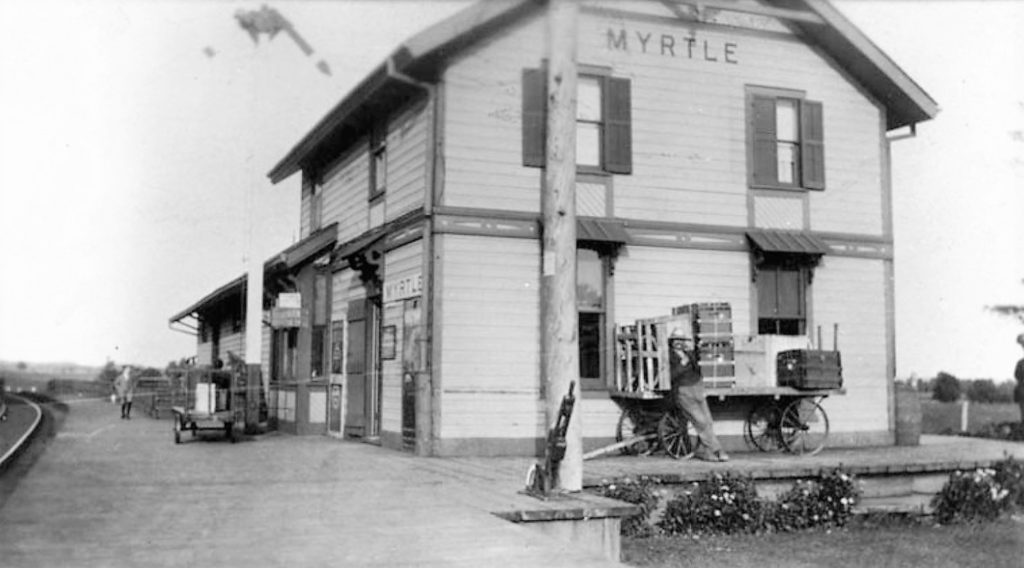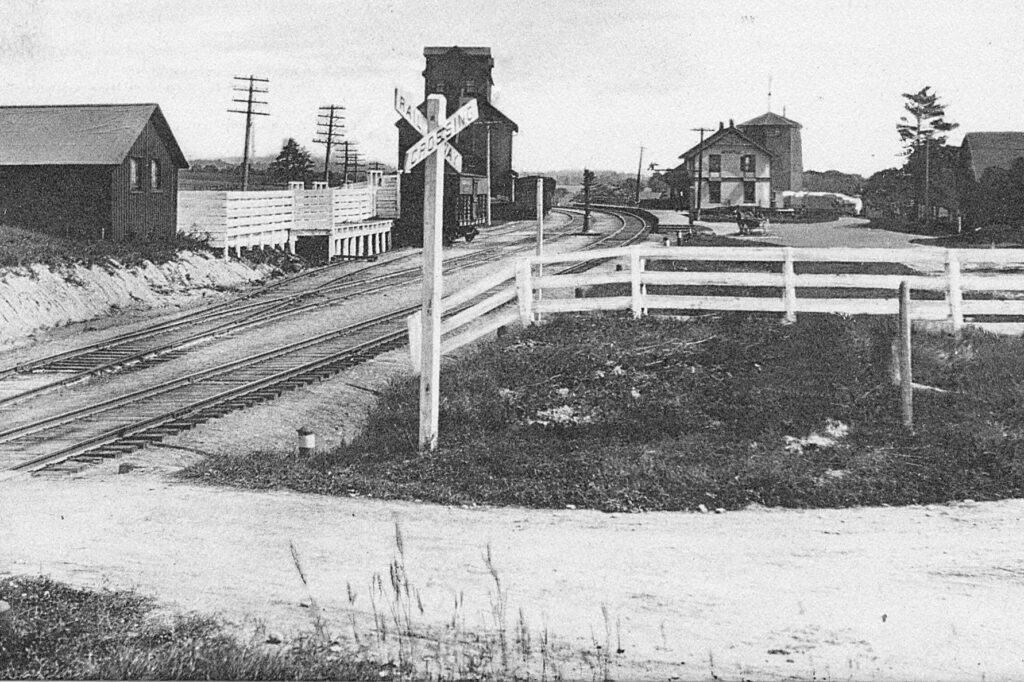Summary
Myrtle Station was built by the Ontario & Quebec Railway in 1884 while the railway line it was situated on was still under construction. It was built near what would ultimately become Highway 12, at the end of the aptly-named Station Road. The Ontario & Quebec existed solely on paper as a proxy of the Canadian Pacific Railway, to whom it was leased for 999 years. The station itself followed a standard “Van Horne” design, named after CP’s then-General Manager William Cornelius Van Horne. This design was particularly common in rural areas on the Canadian Pacific system, as their second floor contained the station master’s living quarters and thus negated the need for separate accommodations. The first floor had a waiting room alongside the station agent’s office, and a long freight room which extended laterally from the east side of the building. At this point in time, the community of Myrtle was largely centered around the intersection of modern-day Highway 12 and Myrtle Road, which was about a kilometre south of the Canadian Pacific station. A new settlement called “Myrtle Station” to distinguish itself from Myrtle proper formed in the immediate vicinity of the station in subsequent years. A large grain elevator was built across from the station in 1887 to serve local farmers. By 1899, a total of 11 passenger trains stopped at Myrtle Station per day.
As rail traffic reached critical mass by the late 1800’s, Canadian Pacific began searching for solutions to allow for a higher volume of trains west of Montreal. An 1898 proposal involved double-tracking the entirety of the line from Montreal to Windsor, which was only partially acted upon. By the early 1900’s it was decided to establish a new right-of-way closer to Lake Ontario between Toronto and Smiths Falls. Instead of a second main track, the 1884 mainline saw some infrastructure upgrades which included a new water tower adjacent to Myrtle Station. It’s unknown if this replaced an earlier water tower at Myrtle or if it was an entirely new addition. In any case this infrastructure would have been crucial for everyday railway operations until the end of the steam era.
The popularization of automobiles during the early to mid 20th century resulted in a significant decline in passenger ridership. This was further intensified after Highway 7 was established between 1930 and 1932, running parallel to the Ontario & Quebec line much of the way to Ottawa and serving many of the same communities. Rail traffic was also further reduced as a result of the pool train agreement between Canadian Pacific and Canadian National in 1933, itself resulting from the effects of the Great Depression. Many trains between Toronto and Montreal were consolidated, with a number of these being rerouted over the CN line much further south. By 1953, passenger service to Myrtle had dropped to six trains per day. In 1954, Canadian Pacific introduced a new service between Toronto and Peterborough utilizing new self-propelled Budd Rail Diesel Cars. Marketed by Canadian Pacific as Dayliners, these units were cheaper to operate than conventional trains that required a locomotive separate from the passenger cars. Service was extended to Havelock in 1957. The remaining conventional through-trains that used the line ended service by the mid-1960’s, leaving the Dayliner as the only service left for Myrtle. The historic grain elevator was destroyed by fire in 1968 and never replaced. Possibly due to the community’s low population density, service to Myrtle ended altogether soon afterward and the station was torn down in 1974. Dayliner service to Havelock remained in place under VIA Rail in subsequent decades until massive budget cuts ended it in 1990.
Today there is little trace of the station except for the street it resided on, which still bears the name “station road”. The community of Myrtle Station similarly retains its name even five decades after the station it was named after ceased to exist. The Canadian Pacific line through town remains an active yet quiet branch which sees a single freight train per day except Saturday. The proposed High Frequency Rail project by VIA is expected to make use of this right-of-way in the future.
Condensed Station Info:
| Location: | Served By: | Current State: | Date Built: | Date Demolished: |
| Station Road | Canadian Pacific (1884 – 1970’s) | Demolished | 1884 | 1974 |



